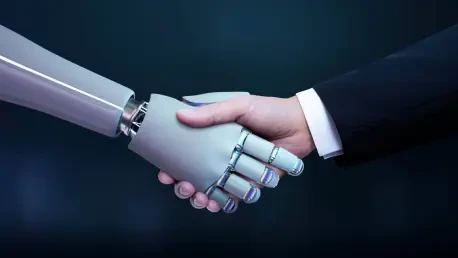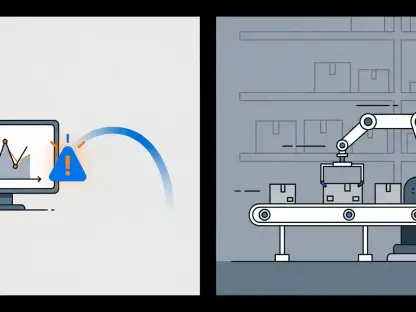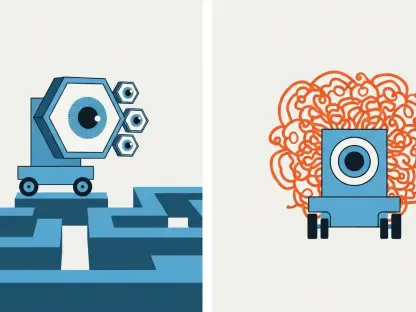In a world where innovation drives success across industries, the ability to think creatively has become a critical skill for professionals and organizations alike. Imagine a scenario where a small marketing agency, struggling to meet client demands, transforms its operations overnight by leveraging artificial intelligence in unexpected ways, doubling its output while reducing workload stress. This isn’t a far-fetched dream but a reality shaped by groundbreaking insights from Stanford University. Jeremy Utley, a renowned instructor at Stanford’s d.school, has worked with over a million students and advised global giants like Microsoft and Hyatt, uncovering a powerful truth: the most innovative minds don’t just use AI—they collaborate with it. Through meticulous research, Utley has developed proven strategies that can dramatically enhance creative potential, even for those who don’t consider themselves naturally inventive. These approaches, rooted in practical application, offer a pathway to rethink problem-solving and idea generation, making them accessible to anyone ready to embrace a new mindset.
1. Excel in “Ideaflow” – The Ultimate Measure of Creativity
Generating a high volume of ideas within a limited timeframe stands as a cornerstone of creative success, a concept Jeremy Utley defines as “ideaflow.” Research from Stanford highlights a striking pattern among Nobel Prize winners and pioneering inventors like James Dyson, who crafted over 5,000 prototypes before perfecting his iconic vacuum cleaner. The lesson is clear: prolific idea generation often precedes breakthrough solutions. With AI, this process accelerates dramatically, enabling users to bypass the struggle of conjuring just a handful of concepts. By prompting AI with requests like “Provide 15 different ways to address this challenge,” individuals can explore a breadth of possibilities rather than settling for a single, often predictable, answer. This shift in approach ensures that the creative process isn’t stifled by early, obvious ideas but instead opens doors to unexpected and innovative outcomes.
The power of ideaflow lies in its emphasis on quantity as a precursor to quality, a principle that AI can amplify with ease. Instead of fixating on finding the “perfect” idea immediately, the focus shifts to exploring a wide array of options, trusting that the best solutions emerge from volume. AI tools can churn out dozens of suggestions in moments, offering raw material that can be refined into something extraordinary. This method challenges the traditional mindset of seeking instant perfection and instead encourages a mindset of exploration. By consistently pushing beyond initial thoughts, as even a young student once noted about creativity being more than the first idea, individuals can tap into deeper layers of innovation. Embracing this strategy transforms AI from a mere answer generator into a catalyst for uncovering truly novel concepts.
2. View AI as a Partner, Not Just a Resource
A common pitfall in utilizing AI lies in treating it as a basic tool rather than a collaborative partner, a mistake that limits its potential. Envisioning AI as a teammate changes the dynamic of interaction, much like working with a colleague on a complex project. This means moving beyond abrupt, impersonal commands and instead engaging with AI as if it were a valued member of the team. Assigning human names and specific roles—such as “Sarah the Strategist” or “Mike the Marketing Expert”—can personalize the experience, making interactions more intuitive. Defining the AI’s expertise, like stating it’s a seasoned project manager with a history of successful launches, sets a foundation for more relevant and thoughtful responses.
This shift in perspective isn’t merely cosmetic but fundamentally alters the quality of output AI provides. Providing detailed context about the task or problem at hand, much like briefing a new team member, ensures that AI delivers responses tailored to specific needs. This approach fosters a sense of collaboration, encouraging users to see AI as an active participant in the creative process rather than a passive utility. The result is a noticeable improvement in the depth and applicability of ideas generated, as AI adapts to the nuanced instructions given. Adopting this mindset can redefine how challenges are tackled, turning routine tasks into opportunities for meaningful partnership and innovation.
3. Hone “Conversational AI Skills”
Many individuals falter with AI by approaching it like a traditional search engine, inputting brief queries and expecting flawless results instantly. However, AI excels when engaged in a dialogue, thriving on iterative exchanges that refine ideas over time. Developing fluency in conversational AI doesn’t require extensive training—just about 10 hours of practice can make a significant difference. Starting with short daily sessions of 10 to 15 minutes, focused on discussing real work challenges, can build this skill effectively. Asking follow-up questions, seeking clarification, and even challenging initial suggestions help create a dynamic interaction that sharpens outcomes.
Taking this a step further, prompting AI to self-assess its responses can elevate the quality of feedback. For instance, requesting it to rate its answer on a scale of 1 to 100 and explain potential improvements encourages a cycle of refinement. This back-and-forth mimics human collaboration, where ideas evolve through discussion rather than arriving fully formed. Such conversational practice shifts the user’s mindset from passive consumption to active engagement, ensuring that AI becomes a partner in problem-solving. Over time, this fluency transforms interactions into a powerful tool for creativity, allowing for nuanced exploration of complex issues that a simple search query could never address.
4. Allocate Time for AI Exploration
Innovation often stems from the freedom to experiment without the immediate pressure of delivering results, a principle that applies strongly to AI usage. Creating dedicated time for AI exploration, even as little as 30 minutes each week, can yield significant insights. During these sessions, experimenting with AI on tasks outside the usual scope—such as personal challenges, brainstorming unconventional ideas, or solving problems in unfamiliar domains—can uncover surprising applications. Keeping a log of what works and what doesn’t during these trials helps track progress and identify patterns that might not emerge from structured, goal-oriented use.
This unstructured playtime with AI isn’t a luxury but an investment in future breakthroughs. Many of the most transformative uses of technology come from accidental discoveries made during low-stakes experimentation. By allowing space to fail and explore without judgment, individuals can stumble upon unique ways to integrate AI into workflows. This approach also mitigates the fear of making mistakes, fostering a mindset of curiosity over criticism. Over time, these exploratory sessions often reveal practical solutions that formal training or planned projects might overlook, making them a vital component of a creative strategy that leverages AI’s full potential.
5. Leverage AI to Break Free from Creative Blocks
Human thinking often gravitates toward familiar patterns, a tendency that can stifle creativity when novel solutions are most needed. AI offers a unique advantage here, as it operates without the cognitive biases that constrain human thought. Using AI as a creativity coach can help escape these mental ruts by challenging assumptions and introducing fresh perspectives. For example, asking how a marine biologist might approach a marketing dilemma or what someone from a different era would think about a current problem can spark ideas that would otherwise remain elusive.
Deliberately seeking out unfamiliar or even uncomfortable angles through AI prompts pushes the boundaries of conventional thinking. This method encourages looking at challenges through lenses that might initially seem irrelevant but often lead to innovative connections. AI’s ability to generate analogies and metaphors across diverse fields becomes a powerful tool for reframing problems in ways the human mind might not naturally consider. By consistently engaging with AI to explore these alternative viewpoints, individuals can break through creative barriers, turning obstacles into opportunities for unique solutions that stand out in their originality.
6. Establish a Regular AI Creativity Routine
True innovation isn’t a sporadic event but a habit cultivated through consistent practice, much like physical exercise or mastering a skill. Integrating AI into daily routines can make creativity a regular part of life, starting with just 15 minutes each morning dedicated to tackling small challenges. This could involve drafting more effective emails, planning the day with greater efficiency, or brainstorming solutions to ongoing issues. Rotating AI through various roles—such as researcher, editor, or strategist—ensures a diverse application that keeps the process dynamic and engaging.
Revisiting past ideas with AI is another critical aspect of this daily practice, especially as technology continues to evolve rapidly. Concepts that once seemed unfeasible might become viable with updated capabilities, offering fresh opportunities for innovation. This routine not only builds familiarity with AI but also embeds creative problem-solving into everyday workflows. Over time, these small, consistent efforts compound, leading to significant improvements in how challenges are approached and resolved. Establishing such a habit ensures that creativity becomes second nature, supported by AI as a reliable partner in the journey.
7. Expand AI Innovation Throughout Your Team
While individual proficiency with AI can be transformative, achieving organizational fluency creates a lasting competitive edge. Companies that excel in this area don’t merely train staff to use tools; they foster a culture of collaboration with AI through systematic approaches. Appointing “AI champions” within different departments to share successful practices and assist colleagues can drive widespread adoption. These leaders help demystify AI, making it approachable and relevant across diverse teams and functions.
Creating safe spaces for sharing both successes and setbacks with AI encourages a learning environment where experimentation is valued over perfection. Organizing team challenges to find innovative AI applications for real business problems can further galvanize collective creativity. The goal extends beyond mere tool usage to fundamentally transforming how teams think and operate. By embedding AI collaboration into the organizational fabric, companies can unlock new levels of innovation, ensuring that the technology serves as a catalyst for systemic change rather than a standalone solution.
Case Study: A Marketing Agency’s Remarkable Turnaround
Leanne’s small marketing agency faced relentless pressure, with a team of five struggling to meet client expectations while working grueling hours. Everything shifted when AI strategies from Stanford were implemented systematically into their operations. “Ideaflow sessions” became a game-changer, enabling the team to generate 50 to 100 campaign concepts per project using AI, far surpassing the 10 to 15 ideas from traditional brainstorming. Additionally, “AI teammate Tuesdays” saw staff partnering with named AI assistants like “Creative Carlos,” treating them as integral collaborators in their creative process.
The impact was profound and swift—within three months, creative output doubled while working hours decreased, allowing the team to secure two major new clients impressed by the innovative options presented. Beyond tangible results, the team rediscovered their passion for creative work as AI handled mundane tasks, freeing them to focus on high-level strategy. Leanne’s success positioned her as an industry thought leader, speaking at conferences about AI collaboration. This transformation underscores how strategic AI integration can revitalize not just workflows but also morale and market positioning.
Key Takeaways for Unleashing AI-Driven Creativity
Ideaflow, the rate at which ideas are generated, emerges as the foundational metric for creative success across individual and team efforts. Treating AI as a collaborative partner, complete with context and dialogue, elevates its role from tool to teammate. Building conversational skills through short, focused daily interactions ensures AI becomes a natural extension of problem-solving efforts. Dedicating time for pressure-free experimentation allows for the discovery of unexpected applications that formal approaches might miss. Overcoming mental biases by seeking diverse perspectives through AI prompts can shatter creative blocks effectively.
Furthermore, embedding AI into daily routines fosters consistent growth in creative capacity, while scaling its use across organizations through team collaboration creates a powerful advantage. Naming AI assistants and assigning specific roles enhances interaction quality, and encouraging self-evaluation of responses drives iterative improvement. Prioritizing the generation of numerous ideas over perfecting a few ensures breakthroughs emerge from exploration. These principles, grounded in practical application, offer a robust framework for harnessing AI to redefine innovation at every level.
Building Tomorrow’s Creative Edge
Reflecting on the journey through these strategies, it becomes evident that those who master AI collaboration gain a distinct advantage in their fields. Jeremy Utley’s research at Stanford proves that creativity isn’t an elusive trait but a skill honed through deliberate practice and the right tools. AI emerges as an amplifier of human potential, not a replacement, when paired with a mindset of partnership rather than mere utility. Starting with small, daily engagements and scaling to sophisticated collaborative efforts paves the way for remarkable transformations, as seen in real-world examples like Leanne’s agency. Moving forward, the focus should be on integrating these practices into personal and organizational routines, ensuring that AI becomes a cornerstone of innovation. Those who adapt early reap benefits that set them apart, while others who lag risk obsolescence in an increasingly competitive landscape.









